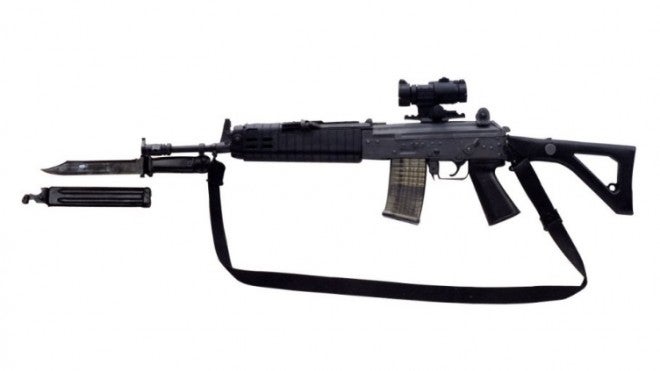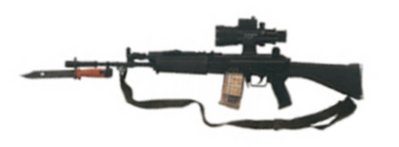The Indian Ministry of Defense is awaiting the results of trials to do with their Excalibur program, of which they are hoping will pass, and then plans to purchase over 600,000 rifles, at the price of 60,000 INR, or around $900 US dollars each. We’ve already covered the severe reliability problems with the INSAS in an article at TFB here, and we have a post about the first news of the Excalibur back in July. In case anyone was wondering, the name Excalibur has nothing to do with a possible play on the word “caliber” but instead is the name of the sword in the myth of King Arthur in Britain, where he pulls the sword out of the stone to become king. Unfortunately for India, it looks like they’re having an awfully hard time pulling the metaphorical perfect infantry rifle out of the stone. The article also mentions that the Indian Armed Forces are still in the process of looking for a carbine since they officially discontinued the 9x19mm Sterling in 2010 (I’m sure they still have tons scattered across armories and still in use, but at least from an official standpoint) and are still waiting to decide on several foreign carbines that were submitted. Of course this is also the bulk of the Armed Forces we are talking about here, the special forces and Indian Marines have their separate procurement programs. From Jane’s-
Senior army officials told IHS Jane’s that 200 prototype Excalibur rifles, fabricated at the Ordnance Factory Board’s (OFB’s) Rifle Factory Ishapur (RFI) in eastern India, would undergo user evaluation trials later in 2015.
Once approved, the army plans to induct over 600,000 Excalibur rifles for around INR36 billion (USD541 million), or around INR60,000 each.
The army opted for the Excalibur after scrapping its 2011 tender for 66,000 multicalibre assault rifles in June, as none of the four foreign models tested met its qualitative requirements.
The Excalibur is a retrofitted version of the Indian Small Arms System (INSAS) assault rifle, designed by India’s Defence Research and Development Organisation (DRDO) and rejected by the army in 2010 for being “operationally inadequate”.
…
The Excalibur’s barrel is 4 mm shorter than that of the INSAS and its hand guard is smaller.
Indian Army Chief of Staff General Dalbir Singh is strongly backing Excalibur as it is a ‘Made in India’ programme and so fits in with the government’s preference for locally manufactured equipment. He has posted infantry officers at RFI to conduct test firings and offer advice on design improvement, sources said.
On 1 September Gen Singh, accompanied by Lieutenant General Sanjay Kulkarni, Director General Infantry (DGI), visited the RFI and personally conducted the ‘water’ and ‘mud’ tests on the rifle, which it reportedly cleared. Both officers also proposed ergonomic alterations to the rifle to render it more user-friendly.
The OFB aims to begin series producing Excalibur on modified INSAS production lines at RFI in 2016 .
Meanwhile, the army has still to decide the outcome of the 2010 tender for 44,618 close quarter battle (CQB) carbines, trials for which concluded in 2013. These featured Beretta’s ARX 160, IWI’s Galil ACE carbine, and Colt’s M4.
The Indian Army has been without a carbine since 2010 when it removed the licence-built Stirling 1A1 9 mm sub-machine gun from service.
While you have a second, this video seems to be taken at an exposition of some sort in India, where the Excalibur is being displayed and talked about. Very crowded noise volume so be sure to turn down your speakers.
Another interesting tidbit that people we have previously neglected to mention is that the Excalibur is nothing new, the concept has been around since the 1990s as apart of the INSAS program. Initially the program was to include an Assault rifle, carbine, LMG, and an Excalibur rifle, with a polymer stock and ability to mount night vision devices (no picatinny rails, 1990s timeframe). So it isn’t as if this advanced rifle just appeared out of nowhere, no, it was included in the INSAS project from the very get go, and has just been continually upgraded. Personally if I were serving in the Indian Army for this time frame, I’d be little angry that a badly performing rifle was fielded to me, while a possibly better alternative had been right there all along. Then again, it was rejected in 2010 for being inadequate.
 Your Privacy Choices
Your Privacy Choices


